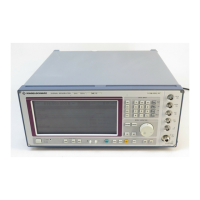Description of Commands – Notation SME
1038.6002.02 3.12 E-13
3.6 Description of Commands
3.6.1 Notation
In the following sections, all commands implemented in the instrument are first listed in tables and then
described in detail, separated according to the command system. The notation corresponds to the one
of the SCPI standards to a large extent. The SCPI conformity information can be taken from the list of
commands in annex C.
Table of Commands
Command: In the command column, the table provides an overview of the commands
and their hierarchical arrangement (see indentations).
Parameter: In the parameter column the requested parameters are indicated together
with their specified range.
Unit: The unit column indicates the basic unit of the physical parameters.
Remark: In the remark column an indication is made on
- whether the command does not have a query form,
- whether the command has only one query form ,
- whether this command is implemented only with a certain option of the
instrument.
Indentations The different levels of the SCPI command hierarchy are represented in the
table by means of indentations to the right. The lower the level is, the
farther the indentation to the right is. Please observe that the complete
notation of the command always includes the higher levels as well.
Example: SOURce:FM:MODE is represented in the table as follows:
SOURce first level
:FM second level
:MODE third level
In the individual description, the complete notation of the command is
given. An example for each command is written out at the end of the
individual description.
Upper/lower case Upper/lower case letters serve to mark the long or short form of the key
notation words of a command in the description (see Section 3.5.2). The instrument
itself does not distinguish between upper and lower case letters.

